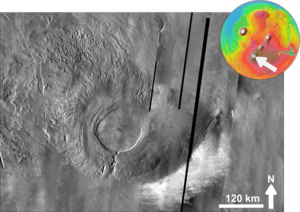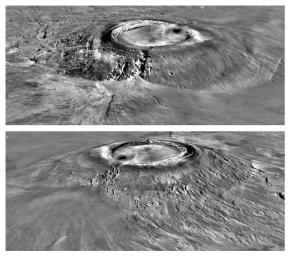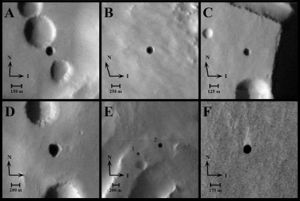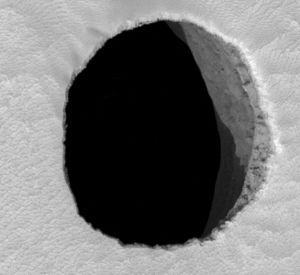Difference between revisions of "Arsia Mons"
(→Caves: added ref) |
(added info) |
||
| Line 1: | Line 1: | ||
| − | '''Arsia Mons''' is an extinct [[shield volcano|shield]] [[volcano]] in the [[Tharsis]] region near the equator. It is part of the [[Tharsis Montes]] group of volcanos. Its location is 8.35 S and 120.09 W (239.91 E) in the Phoenicis Lacus quadrangle. Its name comes from a corresponding albedo feature on a map by Giovanni Schiaparelli, which he named in turn after the legendary Roman forest of Arsia Silva.<ref>https://planetarynames.wr.usgs.gov/Page/MARS/target</ref> | + | '''Arsia Mons''' is an extinct [[shield volcano|shield]] [[volcano]] in the [[Tharsis]] region near the equator. It is part of the [[Tharsis Montes]] group of volcanos. Its location is 8.35 S and 120.09 W (239.91 E) in the Phoenicis Lacus quadrangle. Its name is a classical feature name and comes from a corresponding albedo feature on a map by Giovanni Schiaparelli, which he named in turn after the legendary Roman forest of Arsia Silva.<ref>https://planetarynames.wr.usgs.gov/Page/MARS/target</ref> |
[[Image: Arsia Mons based on THEMIS Day IR.png|thumb|left|px|THEMIS day image of Arsia Mons (color insert indicates location)]] | [[Image: Arsia Mons based on THEMIS Day IR.png|thumb|left|px|THEMIS day image of Arsia Mons (color insert indicates location)]] | ||
Revision as of 08:54, 13 February 2018
Arsia Mons is an extinct shield volcano in the Tharsis region near the equator. It is part of the Tharsis Montes group of volcanos. Its location is 8.35 S and 120.09 W (239.91 E) in the Phoenicis Lacus quadrangle. Its name is a classical feature name and comes from a corresponding albedo feature on a map by Giovanni Schiaparelli, which he named in turn after the legendary Roman forest of Arsia Silva.[1]
Caves
Seven cave entrances have been discovered on the sides of Arsia Mons. These caves could contain reserves of water ice or even life. They are possible locations for a cave settlement. With the low gravity of Mars, lava tubes may be over 800 feet in width. A lave tube on Mars could protect colonists from meteorites and radiation. Because of the lack of a magnetic field at present, mars has a fair amount of radiation, especially from cosmic ray sources.[2] A mini-series produced by National Geographic in 2016 depicted how people could establish a base in a cave.[3] [4]
References:
| This article is a stub. You can help Marspedia by expanding it. |










